The 10 most beautiful universities in Latin America
While it isn’t advisable to base your university choice on how pretty the campus is, here are some of the most beautiful universities in Latin America for you to have a look at
Share
Latin America is a vibrant and colourful place and has a long list of high-ranking universities. Many of these universities are some of the most aesthetically pleasing in the world, and here at THE Student, we have selected the most beautiful universities in Latin America.
While the beauty of a university, should not be your main reason for studying there, it is certainly important that you feel comfortable in the environment that you are studying in.
1. National Autonomous University of Mexico, Mexico
The National Autonomous University of Mexico (UNAM) is fully deserving of this crown – it combines so many different elements, environments and attitudes, it might as well be a city in itself. Built during the 1950s on an ancient solidified lava bed, the university city campus is decorated with mosaic stone murals illustrating Mexican history, by artists such as Diego Rivera and David Alfaro Siqueiros. Architects such as Mario Pani and Juan O’Gorman also contributed, the latter being the designer of UNAM’s world-renowned Central Library (pictured below). Every wall represents a different period in Mexican history, and all the stones were sourced from across Mexico to achieve a rainbow of natural colours – no wonder it took O’Gorman four years to complete. UNAM’s Botanical Garden is Mexico City’s conservation centre and the second oldest space of this sort in the country.
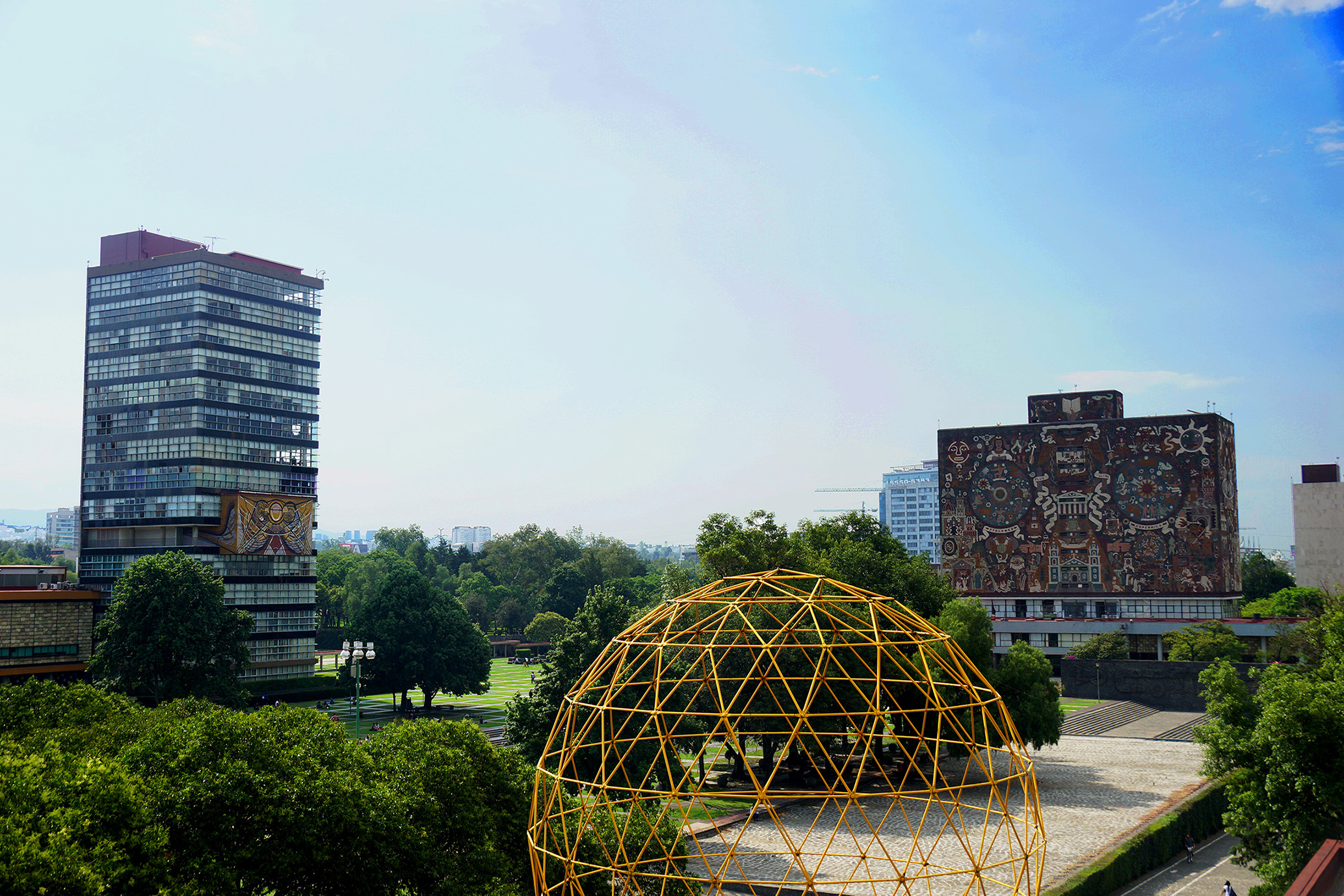 National Autonomous University of Mexico">
National Autonomous University of Mexico">
2. Federico Santa María Technical University, Chile
In terms of drama, Federico Santa María Technical University’s Casa Central (pictured below) brings it in spades. Located in Valparaíso, it covers most of the front section of Los Placeres Hill, on the grounds of the former Pudeto Fort. Designed by Josué Smith Solar, one of Chile’s most respected 20th-century architects, the Neoclassical style campus looks on to the Pacific coast and can be seen from most parts of the bay of Valparaíso. Students should expect jaw-dropping views at every turn; as well as being one of the most remarkable national architectural examples (an accolade awarded in 2008), the campus is renowned for its landscaped gardens, climbing ivy and exotic species.
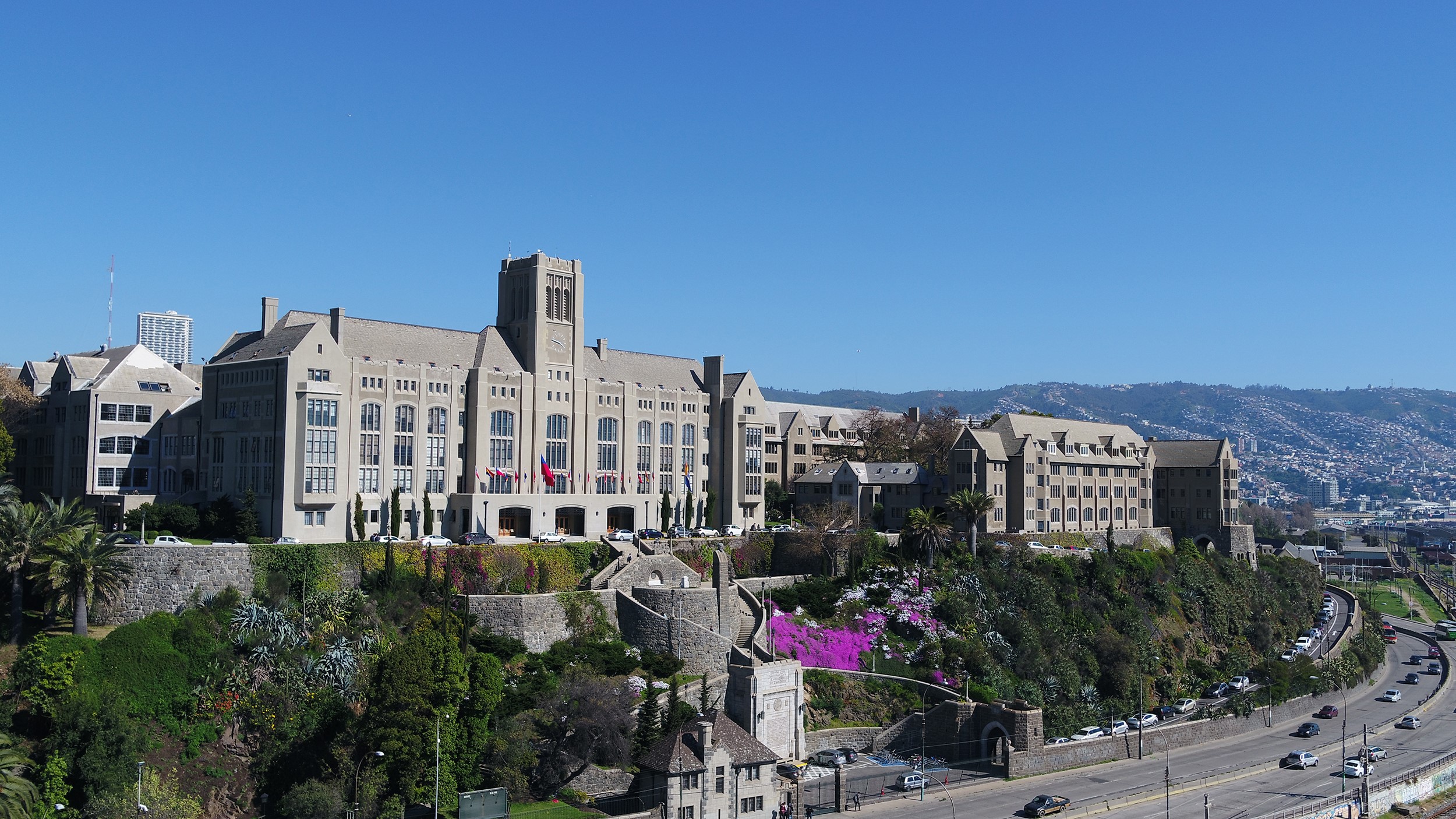 Federico Santa María Technical University">
Federico Santa María Technical University">3. Diego Portales University, Chile
Founded in 1982, Diego Portales University was one of the first private institutions in Chile. It is among the country’s top universities in law, architecture, education, psychology and journalism. Its main campus is in Santiago’s historical centre, while the Economics and Business School (pictured below) is on the city’s outskirts, in Ciudad Empresarial. Designed by up-and-coming Chilean architects Duque Motta, it consists of two very different structures, a slab and a block, both plugged into a low plinth structure embedded in a slope in the foothills of the Cerro San Cristóbal Mountain. In essence, a pair of Brutalist boxes shot through with holes, wood-panelled terraces and blocky balconies.
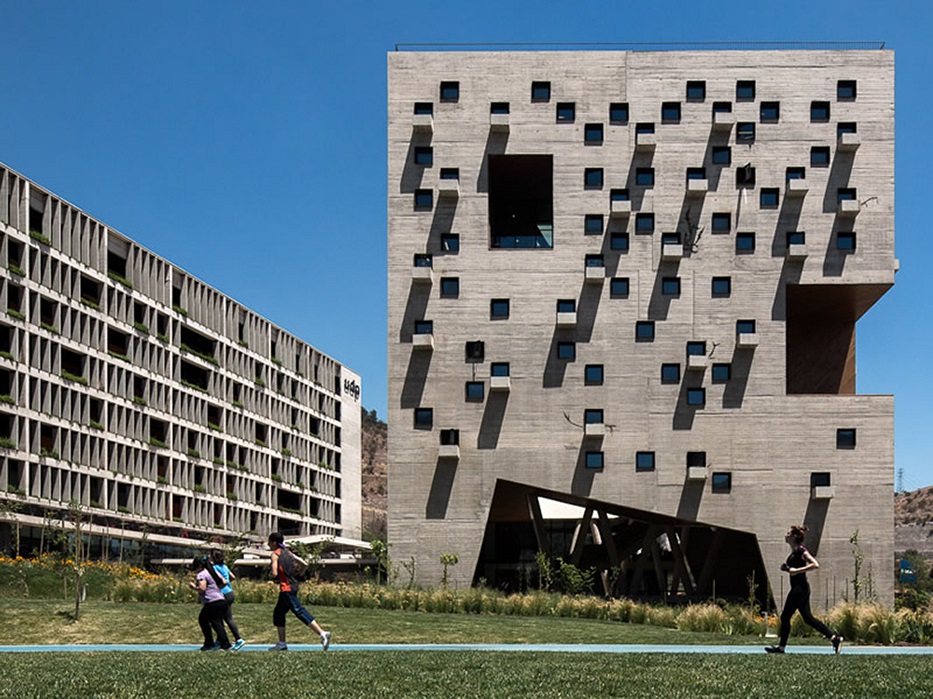 Diego Portales University">
Diego Portales University">4. University of Guanajuato, Mexico
Guanajuato is a riot of opulent colonial buildings, breathtaking tree-filled plazas and brightly coloured houses, all jam-packed on to the steep slopes of a ravine. The Neoclassical white and blue main university campus building (pictured below) caused controversy when it was built in the 1940s because it was such a contrast to the rainbow colour palette of the city. It also obscured the Templo de los Hospitales, a temple built in the 16th century for the worship of Guanajuato’s indigenous population. Aside from this, the university’s buildings are dotted throughout the small city, so their beauty is both a complement and a contrast.
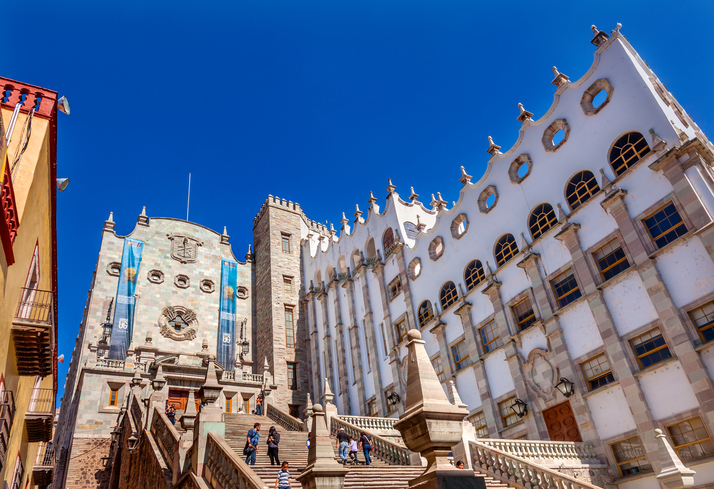
5. University of Guadalajara, Mexico
Set up in 1586, the University of Guadalajara is the second-oldest university in Mexico and one of the most beautiful. The colonial-style Rectoría de la Universidad (pictured below) is gorgeous by day and even more so by night, while the remarkable Biblioteca Octavio Paz draws crowds from far out of town. The 16th-century neoclassical building was originally a chapel and now houses more than 21,000 books from all over the world. Renowned Mexican artist David Alfaro Siqueiros and local painter Amado de la Cueva created the awe-inspiring murals inside, depicting images of the 1910 Mexican Revolution. There are many other sites with murals by Siqueiros, which might explain why the English historian Edward Gibbon dubbed Guadalajara the “Florence of Mexico”.
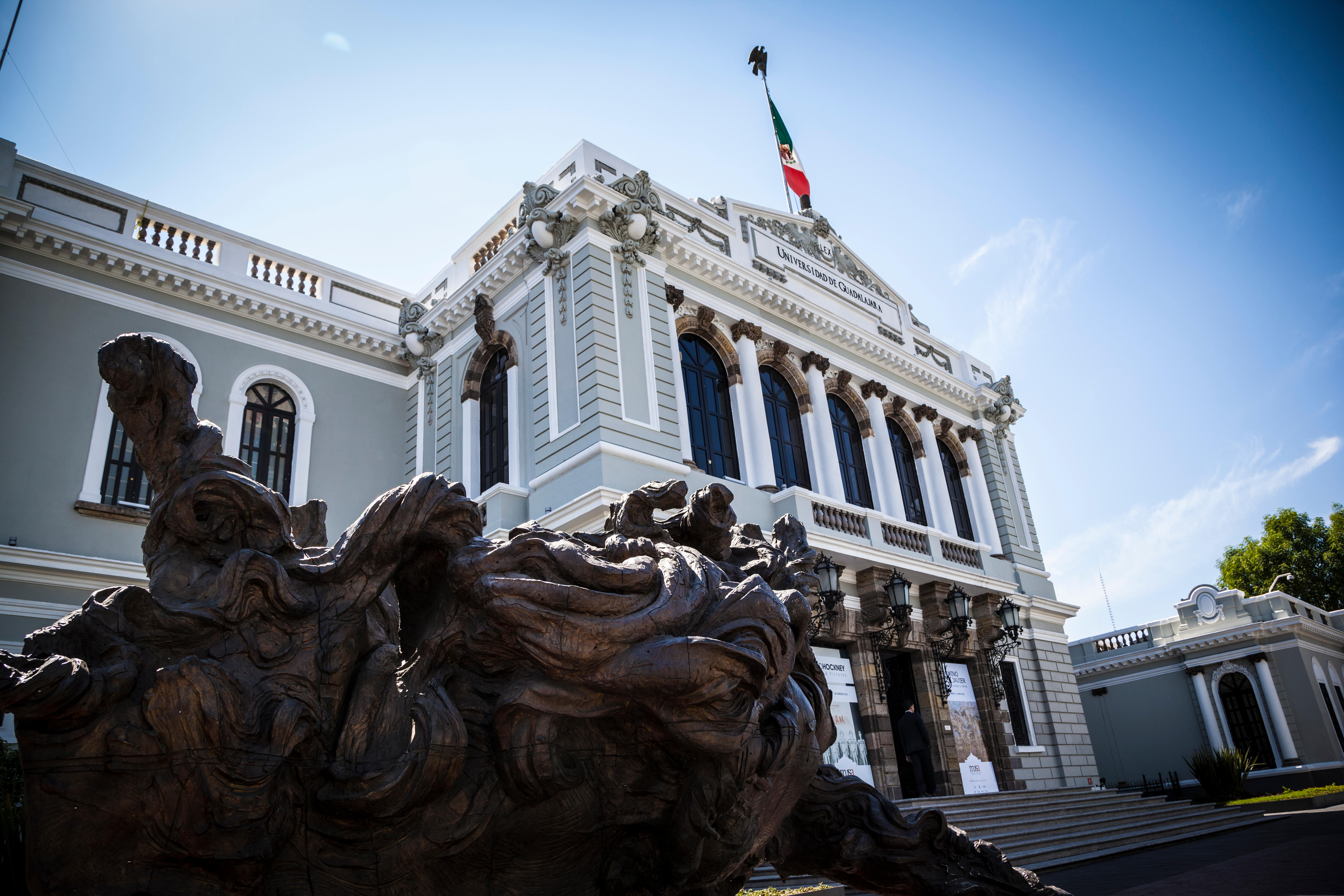 University of Guadalajara">
University of Guadalajara">6. University of São Paulo, Brazil
As the largest Brazilian university, the University of São Paulo does not disappoint aesthetically. As well as the main campus in São Paulo, there are research centres in Bauru, Piraciciaba, Pirassununga, Ribeirão Preto and two in São Carlos. The main campus features imposing 16th-, 17th- and 18th-century architecture, Jesuit churches and shady tree-filled squares. Students will also be spoiled for choice adventure-wise, as the coast of São Paulo offers all kinds of beaches, resorts, waterfalls, caves, parks and mountains.
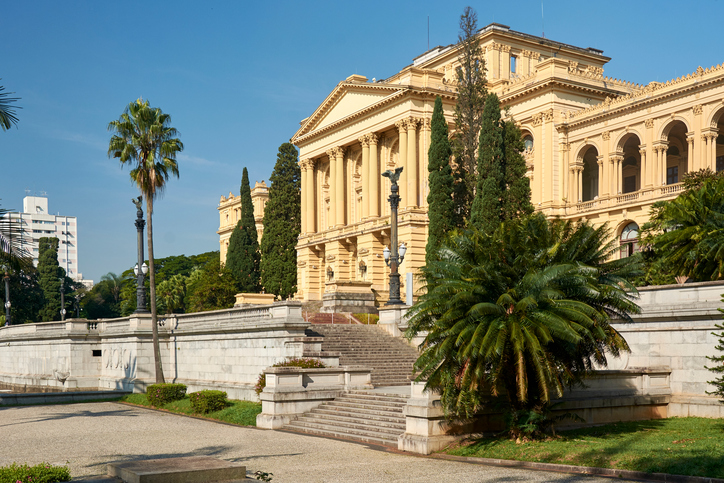
7. University of Córdoba, Argentina
Founded by Jesuits in 1613, the University of Córdoba is packed with history and is closely linked with the Argentinian city of Córdoba, at the foothills of the Sierra Chica mountain range. Located in the centre of the historic downtown, UNC’s main campus is “Ciudad Universitaria”, which mixes 17th- and 18-century architecture. Highlights include the bright white old rectorado building and the library, which contains one of the few rare book collections of its kind in the Americas.
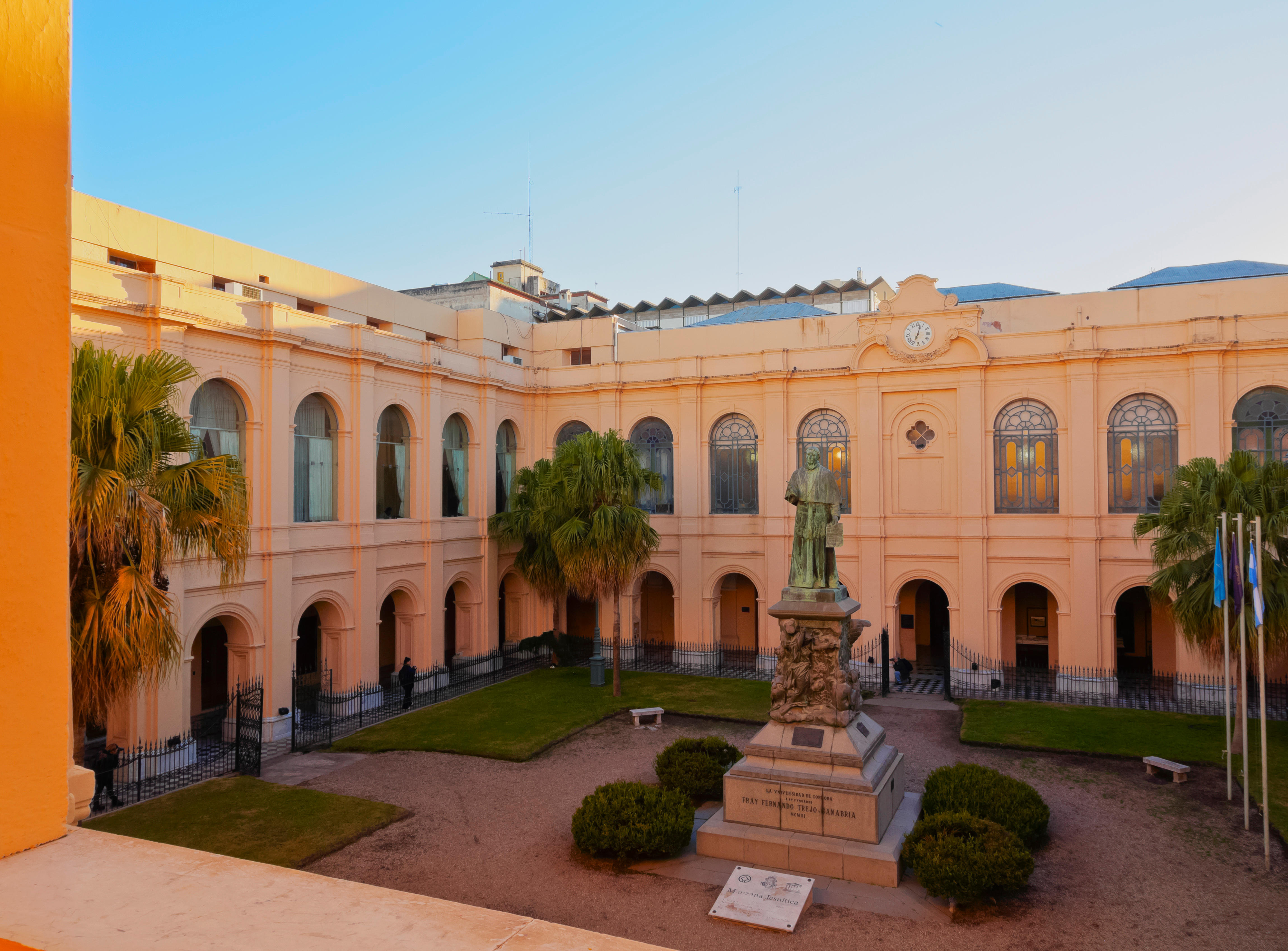
8. Universidad San Francisco de Quito, Ecuador
The Universidad San Francisco de Quito (USFQ), established in 1988, has 16 colleges and institutes spread across three campuses. The quaint main campus is in Cumbayá, some 20 minutes east of Quito city centre, and includes a regal-looking library overlooking a landscaped courtyard, research labs and other administrative buildings. USFQ is the only university in the world that owns a campus in the Galapagos Islands (the Galápagos Institute for the Arts and Sciences) – which is unparalleled in terms of natural beauty – and it also owns a campus in the Yasuni Biosphere Reserve, one of the most biodiverse areas in the world.
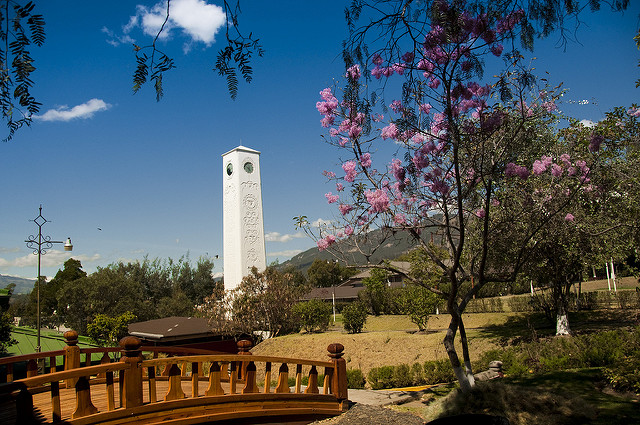
9. Central University of Venezuela, Venezuela
Considered one of the oldest universities in the western hemisphere and certainly the oldest in Venezuela, the Central University of Venezuela was established in Caracas in 1721. The main campus, Ciudad Universitaria de Caracas, was designed by London-born Venezuelan architect Carlos Raúl Villanueva and is considered a masterpiece of urban planning. The main campus also includes a 160-acre tropical garden with a plethora of cacti, orchids, palms and screwpines, two stadiums, a concert hall (with parts designed by Alexander Calder), murals and artworks.
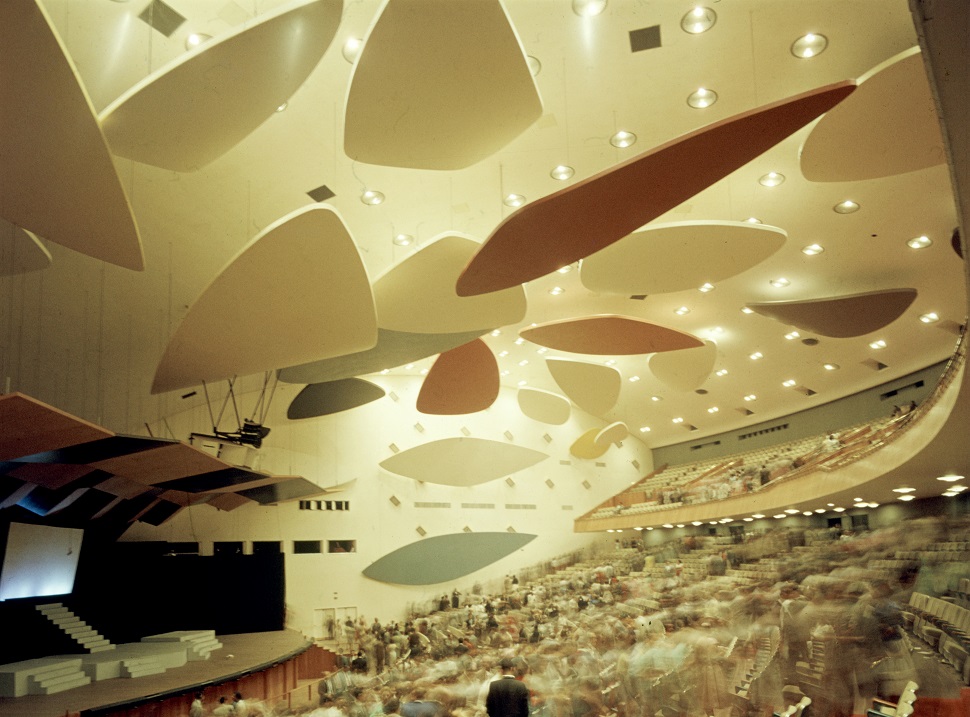
10. University of Buenos Aires, Argentina
Although the University of Buenos Aires has no central campus, it is the largest university in Argentina and the second-largest university (in terms of student population) in Latin America. It was founded in 1821, so the structures range from imposing 17-century architecture to more modern tower-like buildings. Students say that their favourite aspect of their university is the harmony of urban architecture and green spaces.
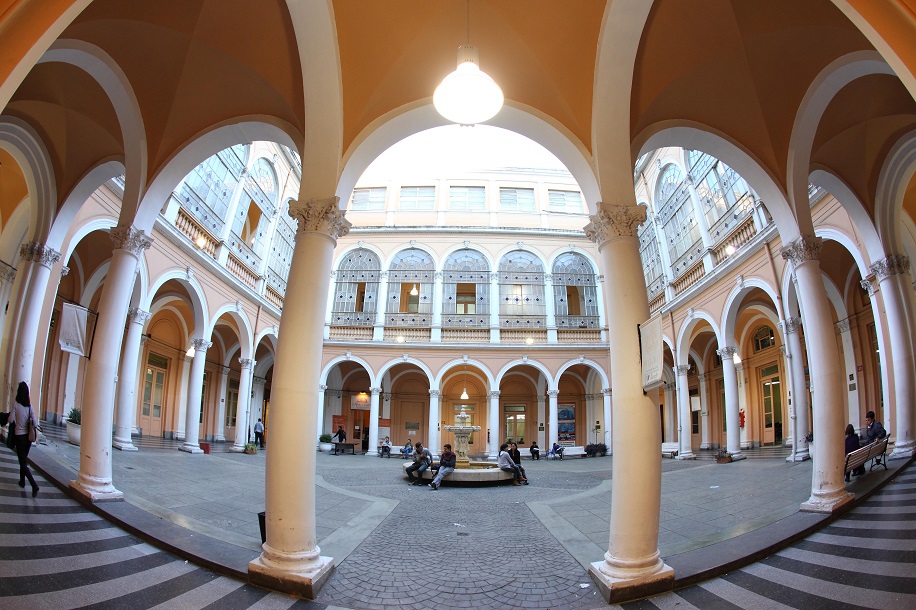 University of Buenos Aires">
University of Buenos Aires">